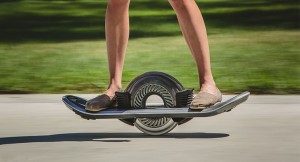

On them they stow all their goods, and also their infants which they bundle up very warm in deer-skins.

Each individual who is able to walk, is furnished with one of these but those for the children are proportionately less. The Mountaineer method is the only one adapted for the interior parts of the country: their sleds are made of two thin boards of birch each about six inches broad, a quarter of an inch thick, and six feet long: these are fastened parallel to each other by slight battens, sewed on with thongs of deer-skin and the foremost end is curved up to rise over the inequalities of the snow. As the settlers displaced the Indians, the term was appropriated and applied to the low-profile wooden sledges made by the colonists. A smaller variant of the toboggan, used for recreational purposes, was known as a Tom Pung. During the tribes' yearly migration to their winter campsites, these sledges were used to transport bulky personal possessions and small children before the introduction of the wheel. Sledges of this type have been in use on the Great Plains and the Great Lakes since 3000 BCE. 1872–1875īefore white colonists arrived in America, toboggan was an Algonquian term for a type of man-hauled cargo sledge made from bark, hardwood or whalebone, and deer or buffalo hide. The Toboggan Party, Rideau Hall, illuminated composite photograph from Lady Dufferin's personal album. Such examples are Tangalooma (Australia) where toboggans are made from Masonite boards and used for travelling down steep sand dunes at speeds up to 40 km/h (25 mph). Toboggans can vary depending on the climate and geographical region. Some parks include designated toboggan hills where ordinary sleds are not allowed and which may include toboggan runs similar to bobsleigh courses. The bottom of a toboggan rides directly on the snow. A toboggan differs from most sleds or sleighs in that it has no runners or skis (or only low ones) on the underside. Designs vary from simple, traditional models to modern engineered composites. In modern times, it is used on snow to carry one or more people (often children) down a hill or other slope for recreation. It is also a traditional form of transport used by the Innu and Cree of northern Canada. In the Southern United States, a toboggan is considered a warm winter hat usually knitted but always covering the earsĪ toboggan is a simple sled traditionally used by children. Traditional birch toboggan with iron runners, originally used by woodcutters in northern Europe.


 0 kommentar(er)
0 kommentar(er)
